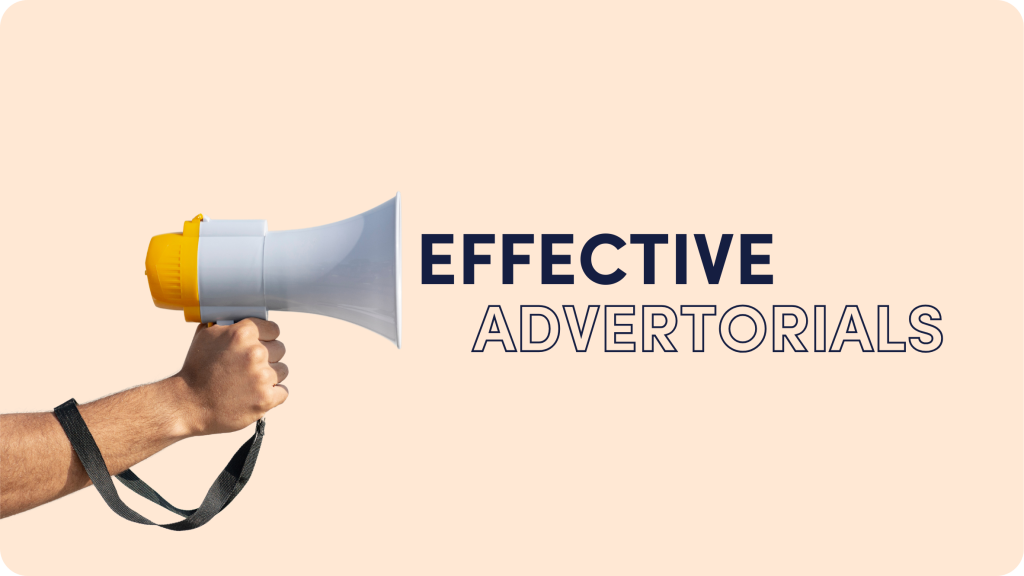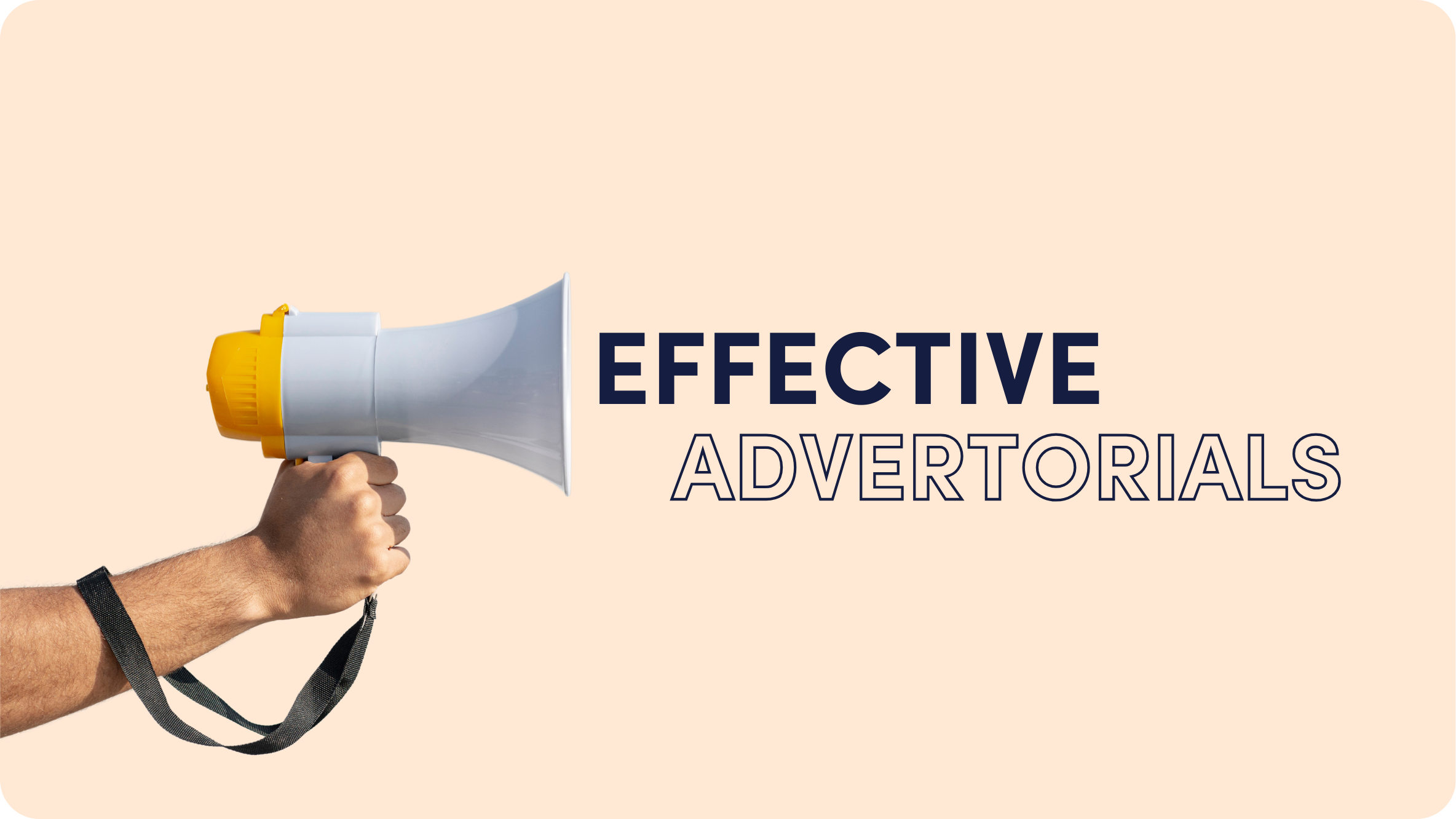How to Write Powerful Advertorials that Sell

Traditional news media is typically divided into two parts: editorial and advertising.
The editorial part provides the news and information. Advertising provides the ads (which, coincidentally, supports the cost of running the media site or company).
When the editorial and advertising concepts come together, what do you get?
Advertorials.
The first advertorials made their appearance over 100 years ago, in printed magazines, newspapers, and periodicals. Think of advertorials as “ads dressed up as editorial content.”
We’ve all come across advertorials before. They look and feel like an informative or entertaining item, but their purpose is to promote a brand or product.
Advertorials have stood the test of time. In the digital world, native ads are a gateway to advertorial content and one of the top formats that marketers use to advertise on the open web.
Native ads – and advertorials – work so well because they fit with the look and feel of the media in which they appear. In a magazine, the advertorial seems just like an article. On the web, a native ad looks like another interesting link to click and content to discover. Native ads are not disruptive like regular ads; they flow within the reading or viewing experience, and consumers tend to interact more naturally with them.
For this reason, native ads tend to perform better than standard display ads, with higher quality traffic, higher click-through rates, and better efficacy on mobile.
Key Components of an Effective Advertorial
An advertorial, at its core, mirrors the style of an editorial or journalistic article. While an article is over when you get to the end, a native advertorial on the web will always lead to the next step: a landing page that features the offer, such as “Buy a product” or “Sign up for a coupon.” By placing advertorial content before the landing page or offer page, you can tap into the active mindset of the reader, and provide the added value that will tempt them to click through to the landing page and convert.
Let’s explore the components that make up the advertorial experience:
Landing page offer:
- Your landing page should focus on one deliverable, with no navigation bar or links to social accounts. The visitor’s only option should be to continue with the desired action.
- All the content (images/ written text) on the page should provide value to the visitor and support the action you want them to take about your offer.
- Make your content scannable with bold, italic, and bulleted lists to highlight key points. Visitors who don’t read every word can still get enough information to tempt a conversion.
CTA (Call-to-Action):
- Craft CTAs that are action-oriented and overcome specific objections. Avoid generic CTAs, like “Sign up” or “Pay now”, as these are more likely to be skimmed over and ignored.
- Ensure your CTA buttons are impossible to miss, using contrasting colors and repeated at multiple scroll depths.
User-friendly forms:
- If your landing page includes a form, make sure it is quick and easy to complete. Ask only for necessary information and implement the auto-complete function.
- Consider using a quiz or question-style form to provide a more natural flow. This also allows you to personalize the questions, making the user feel that you are meeting their needs.
Social proof:
- Include one or more elements of social proof on the page to increase trust. For example, customer testimonials, reviews, logos, trust seals, and earned media features (i.e. “As seen on”) are all good examples of social proof.
Thank You page:
- After the reader (hopefully!) converts, it is customary to show a ‘thank you’ page or pop-up thank-you message. Leverage this asset to keep the interaction going even after the conversion. For example, provide links to more content that might interest them, or present another offer or similar product page.
How to Write Powerful Advertorials: The Script
At the end of the day, the job of an advertorial is not just to give the reader a pleasant experience. The goal is to engage the audience and drive them to convert, whether it be buying a product, downloading an e-book, watching a video, or completing a form.
Native ads and advertorials must resonate with the audience, captivate their attention, and drive the action that leads to conversions and sales.
This is not always an easy thing to do.
That’s why we have created a ‘script’ of how to create powerful advertorials.
While there is no single formula for success, the guidelines below will make it easier.
Emphasize the problem:
- Highlight the issue your product solves. For example, let’s say the problem is weight gain: “The prospect wants to lose weight.”
- Address the key pain points: How does the problem affect the prospect? Pinpoint the “pain” and concerns it brings. For example, health issues, low self-esteem, or not being able to buy nice clothes.
Present the solution:
- Introduce the ideal solution without directly mentioning your product. Pose a hypothetical scenario: “What if there was a way to lose weight without…?”
Introduce your brand:
- Briefly mention your company or brand. Share your story, technology, mission, and/or vision.
Review the alternatives:
- Acknowledge the competition and discuss alternatives. Showcase what sets you apart – perhaps through a comparison table or a USP (Unique Selling Proposition).
Introduce your offer:
- Now, finally, introduce your product. Highlight its superiority and unique features compared to alternatives. What makes you special? What is your USP?
Drive the user to action:
- Conclude with a clear and strong Call-to-Action (CTA). Guide prospects on what steps to take next. For example: “Select your desired weight and get a free sample.”
Chat GPT Prompt to Craft a Great Advertorial
If you want to save time and create an advertorial using Chat GPT, we have developed the following prompt to help you. Try it out!
Please write an advertorial about a product that solves the issue of: {issue}
• The length of it should be at least 700 words and comprised of at least 6 paragraphs. the product name is – {product name}, but do not introduce the product until you discuss the alternatives.”
• Address how this issue affects the reader of the advertorial because {Pain points}.
• Describe what would be a {Prescription} for this issue, potentially helping to save the waste of the readers’ resources.
• Pivot to describe the product creator who is: {The product creator / company background}, • Then move to describe the alternatives like: {Competitive products}.
• For the first time, address {product name} and elaborate on the ways it is better than the aforementioned alternatives due to the fact that {Positioning – product advantages}.
• Finish with a strong call to action related to {Promotion / Offer} telling the reader what he should do next.
Advertorials: Ads with Added Value
Remember, understanding your audience and delivering value are the cornerstones of an effective advertorial strategy. Now, go ahead and use the script and ChatGPT prompt above to create compelling advertorials that not only look and sound great to your audience but also sell, sell, sell!
Happy crafting!


